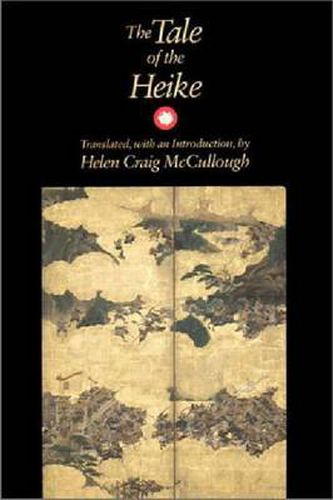Readings Newsletter
Become a Readings Member to make your shopping experience even easier.
Sign in or sign up for free!
You’re not far away from qualifying for FREE standard shipping within Australia
You’ve qualified for FREE standard shipping within Australia
The cart is loading…






The Tale of the Heike is one of the masterworks of Japanese literature, ranking with The Tale of Genji in quality and prestige. Familiar in Japan for generations, first through oral narration and later through the printed page, this fourteenth-century reworking of traditional materials tells the story of the decline and final military defeat of the mighty house of Taira, reporting battlefield exploits in vivid detail,chron icling the fates of high-born ladies and other helpless victims of the times with delicate lyricism, and introducing humorous passages to leaven the comberness of the theme articulated in its famous opening lines: ‘The sound of the Gion Shoja bells color of the sala flowers reveals the truth that the prosperous must decline. The proud do not endure, thay are like a dream on a spring night; the mighty fall at last, they are as dust before the wind.’ The translation is not only far more readable than earlier ones, it is also much more faithful to the content and style of the original, especially in preserving the evidence of oral narration. Intended for the general audience as well as the specialist, this edition is lightly annotated, but includes three appendixes that give background information, a chronology, and an evaluation of the Heike as literature. There is also a glossary of persons, places, and terms. Illustrations consist of a color frontispiece, about fifteen prints from fourteenth- and fifteenth-century manuscripts, and two maps.<
$9.00 standard shipping within Australia
FREE standard shipping within Australia for orders over $100.00
Express & International shipping calculated at checkout
The Tale of the Heike is one of the masterworks of Japanese literature, ranking with The Tale of Genji in quality and prestige. Familiar in Japan for generations, first through oral narration and later through the printed page, this fourteenth-century reworking of traditional materials tells the story of the decline and final military defeat of the mighty house of Taira, reporting battlefield exploits in vivid detail,chron icling the fates of high-born ladies and other helpless victims of the times with delicate lyricism, and introducing humorous passages to leaven the comberness of the theme articulated in its famous opening lines: ‘The sound of the Gion Shoja bells color of the sala flowers reveals the truth that the prosperous must decline. The proud do not endure, thay are like a dream on a spring night; the mighty fall at last, they are as dust before the wind.’ The translation is not only far more readable than earlier ones, it is also much more faithful to the content and style of the original, especially in preserving the evidence of oral narration. Intended for the general audience as well as the specialist, this edition is lightly annotated, but includes three appendixes that give background information, a chronology, and an evaluation of the Heike as literature. There is also a glossary of persons, places, and terms. Illustrations consist of a color frontispiece, about fifteen prints from fourteenth- and fifteenth-century manuscripts, and two maps.<